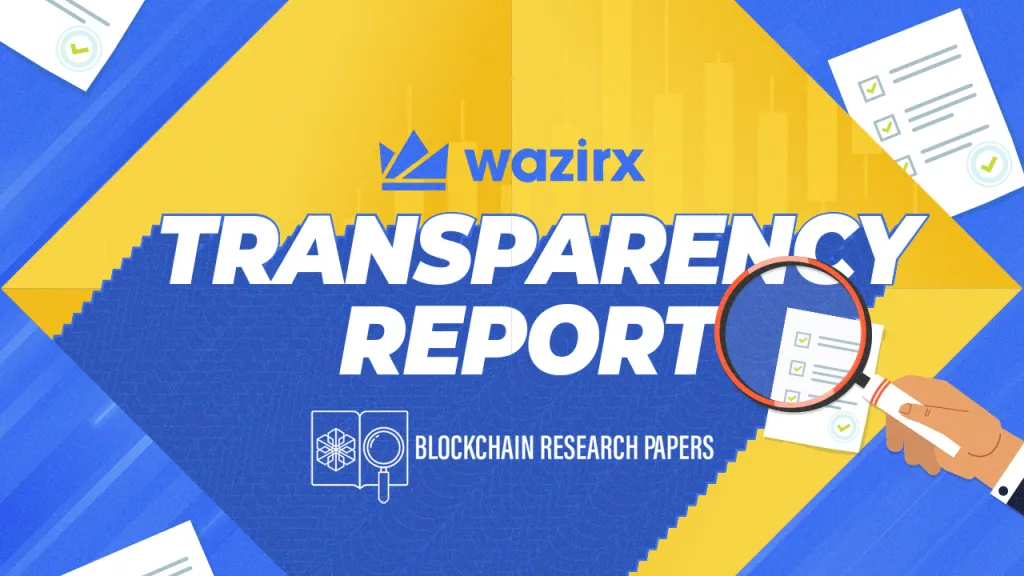Buzz of Connections
Exploring the latest trends in dating, relationships, and social interactions.
Transparency Unchained: The Surprising Truth Behind Blockchain Reports
Uncover the shocking reality of blockchain reports and why transparency might not be what it seems. Click to reveal the truth!
What Are Blockchain Reports and Why Do They Matter?
Blockchain reports are detailed analyses that provide insights into the performance, trends, and activities surrounding blockchain technology and cryptocurrencies. These reports typically cover various aspects, including market statistics, technological advancements, regulatory impacts, and case studies on blockchain applications across different industries. By compiling data from multiple sources, blockchain reports help businesses, investors, and policymakers make informed decisions in the rapidly evolving digital landscape.
The importance of blockchain reports cannot be overstated. They serve as a vital resource for understanding market trends and identifying potential investment opportunities. Furthermore, in an era where transparency and trust are paramount, these reports contribute to building credibility around blockchain solutions. As organizations increasingly adopt blockchain technology, staying abreast of relevant reports allows stakeholders to navigate the challenges and prospects associated with this transformative technology.

Counter-Strike is a popular tactical first-person shooter game that has captivated players worldwide since its release. The game features team-based gameplay, where players assume the roles of terrorists or counter-terrorists. For those interested in gaming-related promotions, you can check out the cryptocasino.com promo code for some exciting offers.
Understanding the Limitations of Transparency in Blockchain Data
Blockchain technology is widely acclaimed for its transparency, which allows users to view transaction details in a decentralized ledger. However, it's essential to understand that this transparency has its limitations. For instance, while the data on the blockchain is open and accessible, it does not always reveal the identities of the transacting parties. Depending on the level of anonymity provided by a particular blockchain, this can hinder the ability to fully trace the origin and flow of funds. Moreover, the immutability of blockchain records means that once data is entered, it cannot be altered or deleted, presenting challenges in correcting mistakes or addressing privacy concerns.
Another critical limitation of transparency in blockchain is the potential for information overload. While having access to vast amounts of data can be beneficial, it can also lead to confusion and difficulty in discerning relevant information. Additionally, the transparency provided by public blockchains may expose users to cybersecurity risks, such as hacking and phishing attacks, as malicious actors may exploit visible transaction histories. In summary, understanding these limitations is crucial for leveraging blockchain technology effectively while mitigating risks associated with data transparency.
How to Interpret Blockchain Reports: A Guide for Beginners
Understanding how to interpret blockchain reports is crucial for anyone looking to dive deeper into the world of cryptocurrencies and decentralized technologies. These reports typically contain vital information regarding transaction volumes, network activity, and market metrics. To begin, familiarize yourself with the key components commonly found in these reports, such as block height, which indicates the number of blocks in the blockchain, and hash rates, which provide insights into the network's security and performance. Additionally, pay attention to the transaction fees that can affect the speed and cost of transactions.
Another essential aspect of interpreting blockchain reports is understanding the various metrics used to analyze data trends. For instance, look for indicators like active addresses and transaction count, as these figures can reveal user engagement and network growth. You can also explore visual representations, such as charts and graphs, to better understand historical data and emerging patterns. By becoming adept at reading these reports, you can make informed decisions about your investments and contribute to discussions in the blockchain community.